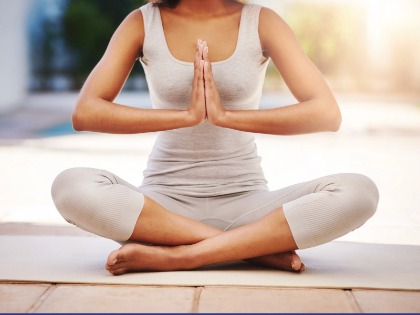Crucial Equipment for Skiing: What You Need to Hit the Slopes
Having the proper equipment may make your day on the slopes comfortable and pleasurable, regardless of your level of experience or if you're just starting out. You can stay safe and happy on the mountain with the best gear, which includes a multi-tool and a backpack that can accommodate your skis.
Pants and Jacket

Foundational Layers
 Base layers in ski clothing are crucial because they act as a barrier against the skin, controlling body temperature and wicking away moisture. Instead of cotton, you should choose synthetic materials or wool blends. Selecting a fabric that will hold up to numerous washes and wearings is also crucial.
Find a foundation layer set that is complete, with top and bottom parts. Many include hoods to provide extra warmth and wind protection. Additionally, some feature integrated heating components for individualised comfort in extremely cold weather. Even more advanced smart base layers now come with sensors that link to apps, providing data about your performance and increasing your pleasure on the slopes.
Base layers in ski clothing are crucial because they act as a barrier against the skin, controlling body temperature and wicking away moisture. Instead of cotton, you should choose synthetic materials or wool blends. Selecting a fabric that will hold up to numerous washes and wearings is also crucial.
Find a foundation layer set that is complete, with top and bottom parts. Many include hoods to provide extra warmth and wind protection. Additionally, some feature integrated heating components for individualised comfort in extremely cold weather. Even more advanced smart base layers now come with sensors that link to apps, providing data about your performance and increasing your pleasure on the slopes.
In between layers
 Your midlayer, which is the middle layer of the three-layer system, retains body heat without compromising breathability. The best layer is a thin, insulating layer of wool or synthetic material.
Waterproof mittens or gloves provide enough dexterity to allow skiing while providing protection from chilly, wet snow. To adapt to shifting weather, look for a high-quality pair with breathability and an anti-fog coating.
Because it shields the head in the event of falls or collisions, helmets are now considered a modern-day requirement for skiers. It ought to fit your ski boots nicely and be cosy.
Your midlayer, which is the middle layer of the three-layer system, retains body heat without compromising breathability. The best layer is a thin, insulating layer of wool or synthetic material.
Waterproof mittens or gloves provide enough dexterity to allow skiing while providing protection from chilly, wet snow. To adapt to shifting weather, look for a high-quality pair with breathability and an anti-fog coating.
Because it shields the head in the event of falls or collisions, helmets are now considered a modern-day requirement for skiers. It ought to fit your ski boots nicely and be cosy.
Eyewear
 Goggles provide you with a clear perspective of the slopes and any potential impediments. Additionally, they shield your eyes from the damaging effects of cold air blasting at fast speeds right into them.
Usually, ski goggles have replaceable lenses that can be used in a variety of lighting and weather scenarios. Lens tints (such as polarised, photochromic, or mirrored) can improve contrast and lessen glare.
There are goggles with spherical lenses that bend both horizontally and vertically, which reduces distortion and increases peripheral vision. In general, their cost is higher than that of cylindrical variants.
Goggles provide you with a clear perspective of the slopes and any potential impediments. Additionally, they shield your eyes from the damaging effects of cold air blasting at fast speeds right into them.
Usually, ski goggles have replaceable lenses that can be used in a variety of lighting and weather scenarios. Lens tints (such as polarised, photochromic, or mirrored) can improve contrast and lessen glare.
There are goggles with spherical lenses that bend both horizontally and vertically, which reduces distortion and increases peripheral vision. In general, their cost is higher than that of cylindrical variants.
Warming Hands
 Having chilly hands can ruin an otherwise enjoyable day on the slopes. For this reason, hand warmers are a must-have item of equipment for novice skiers. The insoles or packets that are chemically triggered give your fingers rapid warmth.
For those who are new to skiing, renting equipment such as poles, skis, boots, and helmets is frequently more cost-effective. This helps you determine whether skiing is really for you while also saving on the initial outlay.
Look for high-end outdoor brands like Arc'teryx that offer an insulated inner jacket and a waterproof shell layer. The Beta AR jacket, worn by fierce Wasatch skier Mali Noyes, is a great all-around option for snowy weather since it has Gore-Tex to keep you dry and Hestra gloves to shield you from the elements.
Having chilly hands can ruin an otherwise enjoyable day on the slopes. For this reason, hand warmers are a must-have item of equipment for novice skiers. The insoles or packets that are chemically triggered give your fingers rapid warmth.
For those who are new to skiing, renting equipment such as poles, skis, boots, and helmets is frequently more cost-effective. This helps you determine whether skiing is really for you while also saving on the initial outlay.
Look for high-end outdoor brands like Arc'teryx that offer an insulated inner jacket and a waterproof shell layer. The Beta AR jacket, worn by fierce Wasatch skier Mali Noyes, is a great all-around option for snowy weather since it has Gore-Tex to keep you dry and Hestra gloves to shield you from the elements.
Sunblock
 Using sunscreen when skiing may seem illogical, but UV damage is a serious risk. You have a greater chance of burning if you don't have protection since the atmosphere is thinner and snow reflects sunlight at higher elevations.
When it comes to self-defence on the slopes, sunscreen, SPF-containing lip balm, and a waterproof emergency whistle are necessities. Think about using a neck gaiter or balaclava that covers your chin and face for additional comfort. The finest warmth and coverage for a long day on the mountain can come from this additional layer, even though many ski jackets have high collars.
Using sunscreen when skiing may seem illogical, but UV damage is a serious risk. You have a greater chance of burning if you don't have protection since the atmosphere is thinner and snow reflects sunlight at higher elevations.
When it comes to self-defence on the slopes, sunscreen, SPF-containing lip balm, and a waterproof emergency whistle are necessities. Think about using a neck gaiter or balaclava that covers your chin and face for additional comfort. The finest warmth and coverage for a long day on the mountain can come from this additional layer, even though many ski jackets have high collars.
Helmet
 One of the most crucial pieces of gear you'll own while skiing is a helmet. Not only does it aid in averting severe injuries, but it's also an essential component of comfort when skiing.
Seek a layout that has ample ventilation. A high-quality helmet will contain internal ducts to remove extra moisture from the head and air vents on the front of the shell.
It's crucial to measure a helmet before purchasing because different manufacturers have different sizing charts (your Curated Ski Expert may help with this). The chinstrap should be just slack enough to allow you to eat or yawn without feeling constricted, yet tight enough to prevent the helmet from coming off during an accident.
One of the most crucial pieces of gear you'll own while skiing is a helmet. Not only does it aid in averting severe injuries, but it's also an essential component of comfort when skiing.
Seek a layout that has ample ventilation. A high-quality helmet will contain internal ducts to remove extra moisture from the head and air vents on the front of the shell.
It's crucial to measure a helmet before purchasing because different manufacturers have different sizing charts (your Curated Ski Expert may help with this). The chinstrap should be just slack enough to allow you to eat or yawn without feeling constricted, yet tight enough to prevent the helmet from coming off during an accident.








